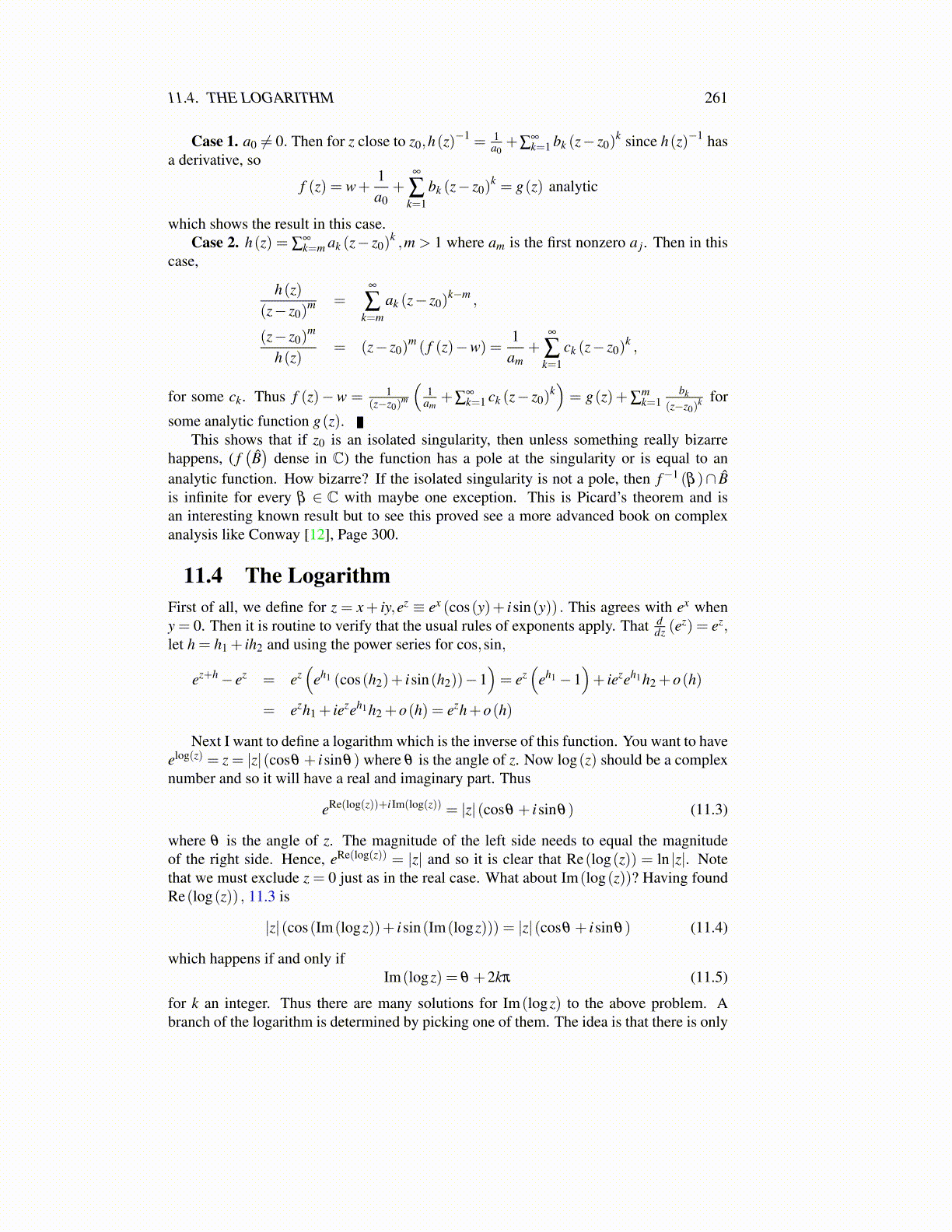
11.5. THE METHOD OF RESIDUES 261
Definition 11.4.1 For a ∈ R, let l be the ray from 0 in the complex plane whichincludes 0 and consider all complex numbers Da whose angle is in (a−π,a+π) and not0.
log(z) = ln(|z|)+ iarg(z)
where arg(z) is the angle for z which is in (a−π,a+π). This function is one to one andanalytic on Da and elog(z) = z . This is called a branch of the logarithm. It is called theprincipal branch if the ray defining Da consists of 0 along with the negative real axis.
Note that log(Da) , is the open set in C defined by Imz ∈ (a−π,a+π) . Thus there isa one to one and onto analytic map which maps Da onto
{z ∈ C : Imz ∈ (a−π,a+π)} .
This book is not about a detailed study of such conformal maps, (analytic functions withvalues in C are called this) but this is an interesting example. Some people find thesekind of mappings very useful and they are certainly beautiful when you keep track of levelcurves of real and imaginary parts. You can have lots of fun by having Matlab graph realand imaginary parts, but this is about functions of two variables so is outside the scope ofthis book.
11.5 The Method of ResiduesNext is a consideration of various improper and difficult integrals using contour integrals.To do this in maximal generality you should develop the winding number and the Cauchyintegral formula for cycles. However, when I do it this way, I sometimes end up wonderingwhat exactly has been shown and how it relates to specific examples. Ultimately in thisbook, the consideration of examples is of interest more than the most general formulationof the theory.
Here the thing of interest is a function analytic in some open connected set except forfinitely many points. The following picture will describe the kind of thing which is meant.The various piecewise smooth closed curves will satisfy the conclusion of the Cauchy in-tegral theorem. Recall that this will be so if the closed curve is contained in a star shapedset on which the function has a derivative. Consider the following pictures which are aparadigm of what is being considered.
A CB
You can see from the picture that if you fattened up the contours around the regionsA,B,C you would have star shaped open sets containing these contours. Thus, if f ′ (z) existsfor z in some open set containing these contours, then the contour integrals over these threewould be 0 and the integrals over the straight vertical lines cancel, so the contour integralover the curve consisting of horizontal lines and half circles with an elliptical curve on topis also 0. Now consider two of these pasted together as shown below.